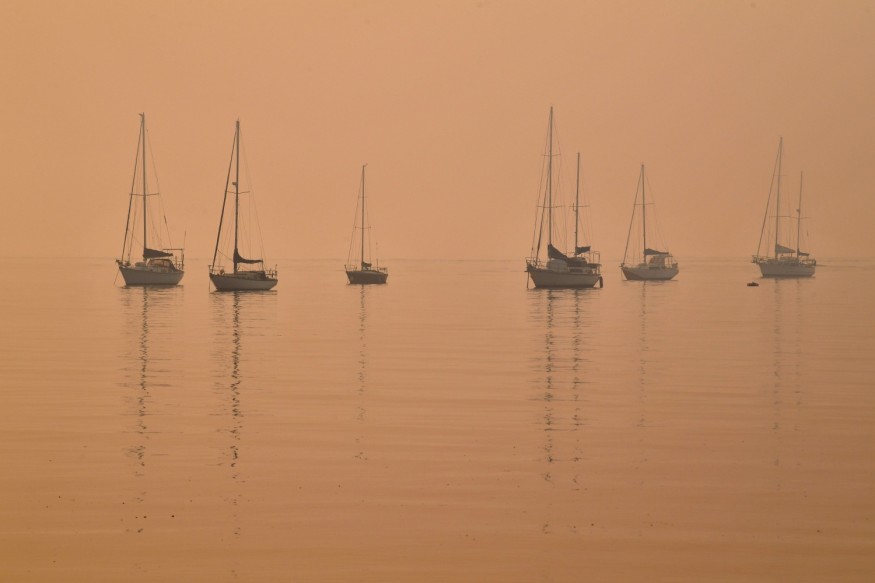
Extreme temperatures and months of severe drought caused a series of massive bushfires across Australia.
The fires are raging since September 2019, which increased over the past week - with several residents and tourists in towns evacuated. High temperatures and powerful winds are forecast for the weekend, creating an increased fire risk.
At least 20 people died - including three volunteer firefighters - and about six million hectares (60,000 sq km or 14.8 million acres) of bush, forest and parks are burned.
Sydney-based photojournalist Matt Abbott tweeted on New Year's Eve that the last day of the decade "felt like [an] apocalypse." Abbott, assigned to cover the wildfires for The New York Times, said he hadn't seen anything like the fire that decimated the town of Conjola in New South Wales on the last day of 2019 compared to the previous weeks that he had been covering the Australian bushfires.
My last day of the decade felt like the apocalypse. Been covering the Australian bushfires for the last 6 weeks, but haven’t seen anything like yesterdays fire that decimated the town of Conjola, NSW. #bushfirecrisis #AustralianBushfires #NSWisburning work for @nytimes pic.twitter.com/KmVKqDMKsf — matthew abbott (@mattabbottphoto) January 1, 2020
Now, where did the Australian Bushfires go?
The phenomenon caused the heatwave within the Indian Ocean
The main climate driver behind the heatwave made the sea surface temperatures warmer in the western half of the Indian Ocean and cooler in its eastern half. The phenomenon is called the positive Indian Ocean Dipole (IOD). The phenomenon is currently the most powerful in 60 years. As a result, there has been higher-than-average rainfall and floods in eastern Africa and droughts in south-east Asia and Australia.
Andrew Watkins, Australia's bureau head of long-range forecasts, said the dipole was crucial to understanding the heatwave. He said the principal culprit of the current and forecasted conditions is among the most powerful positive Indian Ocean dipole events on record. He explained that the positive IOD would create a colder than average water pooling off Indonesia.
The phenomenon, according to Watkins, would imply that we see less rain-bearing weather systems and warmer than average temperatures for large parts of the country. The extreme weather, according to meteorologists, would mean that elevated fire risk in Australia is about to continue.
Bushfires in Australia turns New Zealand glaciers brown
Australia's bushfire smokes made a haze across New Zealand thousands of kilometers away with usually white glaciers creating a shade of caramel, as seen on Twitter post of Fabulousmontser (@Rachelhatesit).
The acrid-smelling haze first appeared in New Zealand early Wednesday when the sun appeared as either a red or golden orb, counting on the thickness of the haze in many areas of the country.
New Zealand's official forecaster MetService tweeted that smoke - which traveled around 2,000 kilometers across Tasman Sean, is visible. The visibility of smoke haze, according to MetService, is as low as 10 kilometers [in] the worst affected areas.
Smoke which has travelled around 2,000km across the Tasman Sea can clearly be seen over the lower South Island. Visibility in the smoke haze is as low as 10km in the worst affected areas. Southwesterlies are expected to gradually flush the smoke laden air away from late today ^AC pic.twitter.com/C5k0D4xvyu — MetService (@MetService) December 31, 2019
A netizen with a Twitter handle, Miss Roho (@MissRoho), posted a view of the top of the Tasman Glacier, which showed the bushfire clouds. She said the people in the area could smell the fire in Christchurch, New Zealand.
Comedian Jemaine Clement posted a photograph of a golden orb on his Twitter account (@AJemaineClement). He noted that the Australian bushfire smoke gave New Zealand a "strange sun."
© 2025 NatureWorldNews.com All rights reserved. Do not reproduce without permission.





